Blog Archives
The Pleistocene mammal Review
How the review works
The aim of the review is to establish material that is of scientific merit and specimens which are good representatives, possessing public potential for display and community events. These two criteria do not necessarily go hand in hand; as a specimen may have a fantastic scientific research potential, but may not be visually impressive. Therefore the specimens are graded against two separate criteria: Scientific Merit (as a numerical value of stars) and Public Engagement (as a Gold, Silver or Bronze status).
For a more in depth look into the review criteria, click on the “Review Criteria” tab in the tool bar above.
The Pleistocene mammal collection consists of 110 trays containing 866 specimens from numerous Historic UK sites, predominantly from the local region of North Yorkshire, Derbyshire and Devon, with a few additional localities. The bulk of the collection is nearly all Pleistocene (2.5Ma – 11,700 years ago) with some minor Holocene (under 11,700 years ago) material, and stored in the archives at the Discovery Centre; with some specimens on display at Leeds City Museum. The localities provide research potential and some scientific merit, but the specimens themselves are very limited for public engagement. Full articulated skeletons and skulls are items of popularity, but these are occasional within the collection. For a detailed overview, please read Danielle’s summary that the end of this review.
The review was conducted as a broad overview of all the historic sites, focussing on individual specimens of note; followed by a systematic, tray by tray investigation of miscellaneous material.
Danielle Schreve led the review over three days with the results occurring as an overview of historic sites with some of the highlights.
The Gold specimens (articulated skeletons)
A wonderful, complete and fully articulated Megaloceros giganteus (3 Gold stars – Leedm.C.1847.11.8) a Giant deer found in County Limerick, Ireland. Specimens are common and widespread across Europe, although often incomplete or a hybrid of two or more individuals. Specimen is on display in Leeds Museum.
A magnificent Pleistocene Hippopotamus amphibius (3 Gold stars – Leedm.B.1852.05.001-122) approx. 126,000 years ago. Found in Wortley, Leeds, West Yorkshire in 1852, during commercial clay excavations for a local brickworks. Unfortunately there were no accurate records of the specific horizons in which the bones were discovered, and only complete bones were retained, with any fragmentary remains being disregarded. The all the specimens were identified at the time by Henry Denny (the curator of then Leeds Philosophical & Literary Society’s Museum) and consisted of: 2 adult and 1 juvenile Hippopotamuses, Mammoth, and Auroch bones, with additional documentation suggesting a Horse and Bear material. The Bear may have been a miss identification of the Auroch jaw, but these two are very different and are unlikely to be mistaken for each other, given the identification at the time were entirely correct.
A minimal articulated specimen on display at Leeds Museum, (pictured above) and features 25 of the 122 bones, with the bulk of the material in archived in storage (pictured right). The hippo specimen was reviewed as an entity, but for the museum records the individual bones were recorded in the table below. This table does not feature in the overall summary at the end of this post, and is simply recorded as one of the 3 Gold stars.
The Silver specimens
A truly wonderful skull specimen of a Ursus spelaeus (2 Silver stars – Leedm.B.TN6054) from the Historic site of, Les Grottes des Échelles, Auvergne, France. Additional material that accompanies this cave bear skull are: two separate jaws from different bears, a limb bones, vertebra and ribs; which once may have been articulated in near complete/complete skeleton.
An impressive Holocene skull of a Ursus arctos (1 Silver star – Leedm.B.1864.37.2), smaller than average for a Brown Bear, and unfortunately missing its teeth, from County Longford, Ireland.
A historically interesting and unusual skull of a Ursus arctos (1 Silver star – Leedm.B.1864.38.1) which exhibits an uncharacteristic elongated and flattered snout for a Brown Bear, from County Westmeath, Ireland. From the Holocene, this specimen was originally identified as a new species of bear and deemed the holotype, but a cast was made of the previous specimen above (Leedm.B.1864.37.2) by mistake and sent to the NHM, London in a case of misidentification and a mix up of accession numbers.
An unusual partial skeleton of a Equus sp. (1 Silver star – Leedm.B.TN6674), a horse with severe skeletal disease, spinal fusing and arthritis. Additional material that accompanies this specimen are: skull with articulated jaw, various limb bones, vertebrae, sacrum and ribs. Unfortunately there is little documentation that accompanies this skeleton, with no location or pathological history.
The Bronze & Clear specimens from historic sites.
Kent’s Cavern
The Kent’s Cavern material features 172 accessioned entries, with multiple specimens covered by a single accession number, with the bulk of the material being fragmentary bones gnawed by hyenas. The collection contains: Hyena, Woolly Rhino, Hare, Brown bear, Bison, Horse, Fox, Badger, Reindeer and bird. This historic site is one of the best Pleistocene hyena den assemblages in the UK, with material distributed worldwide.
A very good specimen of Crocuta spelaea (3 Bronze stars – Leedm.B.1882.06.CG.2), a spotted hyena’s left lower jaw with molar teeth; from Smerdon’s Passage, Kent’s Cavern, Devon, England.
A good specimen of Ursus sp. (3 Bronze stars – Leedm.B.1882.06.U) bear incisor tooth, with repaired damage; from North Sally port, Kent’s Cavern, Devon, England.
A rarer specimen of Strongyloceros spelaeus (3 Bronze stars – Leedm.B.1882.06.BZ), left upper molar tooth from a giant red deer; from Smerdon’s Passage, Kent’s Cavern, Devon, England.
A selection of Coelodonta antiquitatis (3 Bronze stars – Leedm.B.TN6300), a upper and lower molar teeth from a woolly rhino; from Kent’s Cavern, Devon, England.
A semi-rare specimen of an unidentified Aves (3 Clear stars – Leedm.B.1882.06.C.2), a distinct birds carpometacarpus wing bone; from South Sally port, Kent’s Cavern, Devon, England.
Windy Knoll
The Windy Knoll material features 61 specimens, consisting of complete bones or large sections of bone. The collection contains: Auroch, Brown bear, Bison and Reindeer. The historic site has some of the best preservation of Pleistocene material in the UK, with material in only a few museums.
A very good specimen of Bison priscus (3 Bronze stars – Leedm.B.2014.05.725), a well preserved humerus limb bone; from Windy Knoll, Derbyshire, England.
A good specimen of Rangifer tarandus (2 Clear stars – Leedm.B.TN6564), partial and back half of a reindeers skull with antler pedicles or mounts; from Windy Knoll, Derbyshire, England.
Wookey hole
The Wookey hole material features 43 specimens, consisting of teeth and fragmentary bones gnawed by hyenas. The collection contains: Woolly rhino and Red deer from this historic and famous series of caves.
A good specimen of Coelodonta antiquitatis (3 Bronze stars – Leedm.B.1863.64.1AJ), a woolly rhino tooth, right upper first molar; from Wookey hole, Somerset, England.
Raygill fissure
The Raygill fissure material features 48 specimens, consisting of teeth and occasional bone fragments. The collection contains: Hyena, Narrow nosed rhino, Bison, Hippo and Straight tusked Elephant. The historic site has poorly preserved specimens, with material distributed in only a few museums and private collections.
A poorly preserved tooth specimen of Stephanorhinus hemitoechus (3 Bronze stars – Leedm.B.TN6412), a narrow nosed rhino, right lower second molar; from Raygill fissure, North Yorkshire, England.
Brixham Cave
The Brixham Cave material features 27 specimens, consisting hyena jaws and fragmentary horse long bones gnawed by hyenas. The collection contains: Hyena and Horse. The historic site has well-preserved specimens, with material in a number of museums.
An interesting specimen of Crocuta spelaea (2 Clear star – Leedm.B.1869.07.03), three spotted hyenas lower jaw with molar teeth; from Brixham cave, Devon, England.
Kirkdale Cave
The Kirkdale Cave material features 19 specimens, consisting of teeth and fragmentary bones. The collection contains: Hyena, Fox, Wolf, Bison and Water vole. The historic site has well-preserved specimens, with material in a few museums.
A scientifically important specimen of Arvicola terrestis (3 Clear star – Leedm.B.1868.08.B), three water vole jaws with molar teeth, with unattached incisors; from Kirkdale cave, Cumbria, England.
Carlisle
The Carlisle peat bog material features 8 Holocene specimens. The collection contains an Auroch, from an unknown site of merit, featuring well-preserved specimens with unknown distribution.
Two well-preserved ribs of Bos primigenius (2 Bronze stars – Leedm.B.TN6512), the right rib exhibits a healing fracture, from Carlisle, Cumbria, England. Additional material that accompanies this specimen are: additional ribs (Leedm.B.TN6511), scapula, metatarsal, limb bones and jaw.
Additional specimens of note and merit:
A wonderful specimen of Mammuthus sp. (2 Bronze stars – Leedm.B.TN3132), a juvenile mammoth jaw with premolar teeth; from the Forest Bed, Mundesley, Norfolk, England.
A beautifully preserved specimen of Felis silvestris (1 Bronze star – Leedm.B.TN6070), a wild cat jaw with canine and molar teeth; from Kirkhead cave, Cumbria, England.
A wonderful and curious specimen of Glyptodon reticulatus (1 Bronze star – Leedm.B.1868.69.7), a section of carapace or shell from a distinct and incredible animal; from Buenos Ayres, Argentina.
A good specimen of Palaeoloxodon antiquus (0 Bronze stars – Leedm.B.TN899), a straight tusked elephant tooth, left lower first molar with root; from an unknown location.
An interesting specimen of Mammuthus primigenius (0 Bronze stars – Leedm.B.TN4778), a cut cross-section of woolly mammoth tooth, lower first molar; from an unknown location.
Other sites of interest that are not featured are:
Dowker Bottom Cave
The Dowker Bottom Cave material, consisting of 42 Holocene specimens, mixed with Neolithic domesticated animals. The collection contains: Wolf, Badger, Roe deer and Red deer; and domesticated: Cattle, Sheep and Horse. A historic site situated in North Yorkshire, England; features well-preserved specimens, with material in a few museums.
Oreston Cave
The Oreston Cave material features 28 specimens, mostly consisting of teeth and occasional bone fragments. A rare collection containing: Hyena, Horse, Boar, Bison, Red deer, Roe deer and Sheep. A historic site situated in Plymouth, Devon, England; features well-preserved specimens, with material in only a very few museums.
Sundwig Cave
The Sundwig Cave material features 15 specimens, as partial or complete bones. The collection contains: Giant deer, Woolly rhino, Reindeer, Hare, Mammoth, Fox and Auroch. A historic site situated in Westphalia, Germany; features well-preserved specimens, with limited distribution in the UK.
Victoria cave
The Victoria cave material features 11 specimens, mostly consisting of teeth and occasional bone fragments. The collection contains: Hyena, Bison, Horse, Roe deer and Sheep. A historic site situated in North Yorkshire, England; features well-preserved specimens, with material in a number of museums.
The review covered 804 specimens, establishing the following summary.
Gold = A truly amazing specimen; Silver = A very good specimen that has great potential; Bronze = A good specimen which can demonstrate a particular feature; Clear = A specimen that has limited visual qualities.
3 stars = High scientific importance; 2 stars = Moderate scientific importance; 1 star = Fair scientific importance; 0 stars = Supported by limited or no documentation.
Danielle’s summary of the Pleistocene mammal collection.
The Leeds Museum collection of Pleistocene vertebrates is characterized by predominantly British mammalian material of Late Pleistocene and Holocene age (126,000 years to present). A small amount of material is of early Middle Pleistocene age, from the “Forest Bed” deposits around Cromer, although further provenance information would be needed to refine the age (between 780,000 and 450,000 years old). Further small collections have come from caves in France and Germany. The fossils are identified correctly in the vast majority of cases (where checks were made against the electronic databases or specimen labels) but a major issue for a substantial proportion of the material is the lack of provenance, likely an artifact of the historical damage to the collection during the Second World War. This acts to reduce the overall scientific significance of specimens without a known locality, although it does not impinge on their potential importance as outreach specimens. A few fish and very rare bird remains were also noted.
The collection contains three assemblages of international significance in terms of their scientific importance and link to historical collections or notable antiquarians. The material described below is suitable for diverse morphometrical studies, stable isotopic and elemental analyses to reconstruct trophic level or environmental parameters, relatively new palaeodietary techniques such as dental microwear (where teeth are well preserved) and, in the case of material younger than 50,000 years old, potentially for radiocarbon dating and molecular analysis. These are:
- The Last (Ipswichian) Interglacial assemblage from Wortley, Leeds (“the Armley Hippo”). Despite the reported finding of the remains of four hippopotamuses in 1852 (and subsequently – see footnote in Denny, 1852) in deposits of the River Aire at the Longley’s brickfield in Wortley, the brief examination of the collection undertaken here suggests remains of a minimum number of two individuals are present, based on body part and side representation. A more detailed morphometrical study, including closer inspection of the teeth, would be required to confirm this definitively. The remains comprise mostly those of a single, large adult individual, parts of which are on public display. The major postcranial elements are mostly intact and although dental material is present (although incomplete), the crania were seemingly very fragmented. Although hippopotamuses are well known and widespread from Last Interglacial deposits in Britain, the Wortley example is an extremely important find, since discoveries of articulated large mammal fossils are very rare. Only the site of Barrington (Cambridgeshire) approaches such a degree of completeness in terms of hippopotamus remains in Britain but the skeleton on display from that site in the Sedgwick Museum of Geology in Cambridge is a composite, whereas the Wortley material is (at least) a single individual. The Wortley material is stained black and is generally very well preserved, although some specimens are suffering because of old conservation procedures. The completeness of the material (apparently lacking any evidence of weathering, abrasion or carnivore modification) suggests that the animals may have perished due to flooding and that the carcasses were buried very quickly after death. The assemblage also includes remains of mammoth (Mammuthus primigenius), of younger age than the hippopotamus, and aurochs (Bos primigenius), which is likely contemporary.
The hippopotamus remains date to the Last Interglacial, c. 126,000 years ago, correlated with Marine Oxygen Isotope Stage (MIS) 5e. Currant and Jacobi (2011) assigned mammalian faunas from this period to the Joint Mitnor Cave Mammal Assemblage-Zone. This interglacial was characterized by warmer summer temperatures than present (around 5 degrees C warmer) and mild winters above freezing, as attested to by the hippopotamuses themselves, which cannot tolerate seasonally-frozen water bodies. Although restricted to sub-Saharan Africa today, hippos were much more widespread in southern Europe in the past, although their presence in Britain during the last 450,000 years is restricted to the Last Interglacial. They are therefore an important biostratigraphical or “marker fossil” for this interglacial. The published reports from Wortley mention plant remains from the clays but no further details are provided. It would be extremely interesting to know if equivalent deposits from this river terrace existed in the area today, which could be the source of new investigations. Evidence from other Last Interglacial sites in Britain suggests the development of mixed oak woodland at this time, although megafauna such as hippopotamus exerted a strong effect on the local vegetation, especially in bankside habitats, where they heavily grazed the surrounding area. The Wortley hippo individual(s) are of scientific significance to any researcher interested in Pleistocene megafauna. They are iconic finds for the city of Leeds and of supreme public interest. Very much more should be made of their discovery and significance in the main museum gallery.
- The Last (Ipswichian, MIS 5e) Interglacial assemblage from Raygill Fissure, Lothersdale, near Skipton. This assemblage has never been published in detail and is much less well known that other sites such as Victoria Cave and Kirkdale Cave (both North Yorkshire) but is nonetheless significant as a good example of a Last Interglacial mammal assemblage. The assemblage dates back to the late 19th Century and an excellent review of its discovery and context is provided by O’Connor and Lord (2013). The assemblage at Leeds Museum is dominated by teeth (most of which are battered), attesting to a strong degree of collector and/or preservational bias. It contains Palaeoloxodon antiquus (straight-tusked elephant), hippopotamus (Hippopotamus amphibius), narrow-nosed rhinoceros (Stephanorhinus hemitoechus), bison (Bison priscus) and spotted hyaena (Crocuta crocuta). The palaeoenvironmental and palaeoclimatic reconstructions of the assemblage are the same as for Wortley above, as is its attribution to the Joint Mitnor Cave Mammal Assemblage-Zone. This assemblage is of scientific importance for our understanding of faunal development under warmer climate conditions in Britain. Cliffe Castle in Keighley also contains material from this site.
- The Early Devensian assemblage from Windy Knoll, Castleton, Derbyshire. This is an assemblage of historic interest, investigated by Rooke Pennington and William Boyd Dawkins between 1870 and 1876. The material at Leeds is well-preserved and the collection is dominated by reindeer (Rangifer tarandus) and bison (Bison priscus); it complements other holdings in Buxton and Manchester Museums, amongst other institutions. Biostratigraphical analysis of Late Pleistocene assemblages by Currant and Jacobi (2011) has attributed faunas of the Early Devensian to the Banwell Bone Cave Mammal Assemblage-Zone, based on the type site of the same name in Somerset, which has yielded a biologically very restricted fauna of reindeer and bison, with the additions of a very large brown bear (Ursus arctos), wolf (Canis lupus), Arctic fox (Alopex lagopus), mountain hare (Lepus timidus) and northern vole (Microtus oeconomus). Assemblages with this characteristic faunal composition have been assigned to MIS 5a, an interstadial within the Early Devensian, based on Uranium-series dating evidence of key sites (Gilmour et al., 2007). Although occurring in an interstadial, the make-up of the fauna suggests cold, maritime conditions with a high degree of snow cover, open tundra and palaeotemperature reconstructions based on beetle assemblages typically indicating mean summer temperatures of 7 to 11 degrees C and winter temperatures of -10 to -30 degrees C in Britain. Currant and Jacobi (2011) have further speculated that Britain may be an island at this time. Windy Knoll is a key site in our understanding of the effects of climatic deterioration on biota and landscapes after the end of the Last Interglacial.
Leeds Museum also contains material of scientific value from Wookey Hole Hyaena Den (near Wells, Somerset) and Kents Cavern (Torquay, Devon). Both sites have long and historic pedigrees of investigation and both date to the Middle Devensian (MIS 3), c.60,000-25,000 years ago, a period of relatively elevated temperatures during the last glaciation. This period saw the development of rich tundra grasslands (the ‘Mammoth Steppe’) across Eurasia and the replacement of the limited fauna of the Early Devensian by a much more diverse range of species, including woolly mammoth, woolly rhinoceros (Coelodonta antiquitatis), horse (Equus ferus) and spotted hyaena, as well as brown bear, reindeer and bison. Neanderthals are present in the early part of the Middle Devensian and modern humans from c.40,000 years onwards. The Leeds Museum assemblages complement much larger collections from these sites in Wells Museum, the South-West Heritage Trust in Taunton and Manchester Museum, amongst others, but are nevertheless important records for researchers investigating specific taxa or assemblages from this period.
In terms of additional material of public interest, the skeleton of the male giant deer (Megaloceros giganteus) on display in the main museum gallery, together with the isolated male skull and antlers of the same species, are clearly attractive and impressive. The former would have value added if it were from a single individual (not established at the time of writing) and from a known locality. A couple of skulls of bear from Ireland are also notable, one of which was previously attributed to a defunct holotype of Ursus planifrons Denny 1864.
The collections also contain abundant material from various sites that are clearly of Holocene age (younger than 10,000 years) and which have yielded remains of domestic animals, occasionally in association with some wild elements. Material from both cave fills and open sites is present. Where localized, these assemblages might potentially be of interest to zooarchaeological or site-based palaeoeconomic studies. I would identify the assemblage from Carlisle, which has yielded an exceptionally well-preserved but severely pathologically-deformed horse skeleton as a fine example of its kind.
References
Currant, A.P. & Jacobi, R. The Mammal Faunas of the British Late Pleistocene. In Ashton, N., Lewis, S. & Stringer, C. eds. 2011. The Ancient Human Occupation of Britain. Amsterdam: Elsevier, pp. 165–180.
Denny, H., 1859. On the discovery of hippopotamic and other remains in the neighbourhood of Leeds. Proceedings of the Geological and Polytechnic Society of the West Riding of Yorkshire, 3, 321–336.
Gilmour, M. et al., 2007. Recent TIMS dating results from British Late Pleistocene vertebrate faunal localities: context and interpretation. Journal of Quaternary Science, 22, 793–800.
O’Connor, T. & Lord, T. Cave palaeontology. In Waltham, T. & Lowe, D. (eds) 2013. Caves and Karst of the Yorkshire Dales. British Cave Research Association, pp. 225-238
The Pleistocene mammals, along with all the other collections are open and free for anyone to view by appointment, just call Leeds Discovery Centre on 0113 3782100 or email discovery.centre@leeds.gov.uk
I would like to take this opportunity to thank Danielle for this wonderful review and three fantastic days. The amount of material covered was extensive, with the additional sorting of modern osteology within the collection; to which I am sincerely grateful.
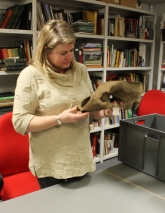
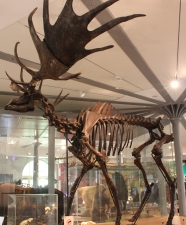
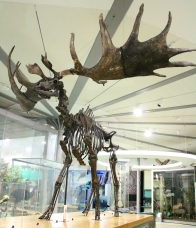
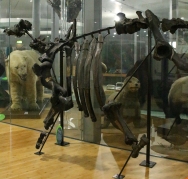
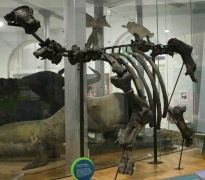
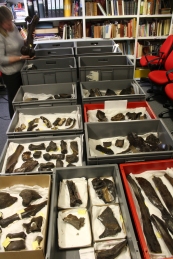

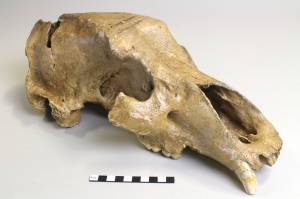

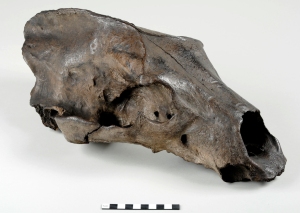

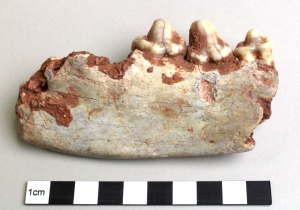
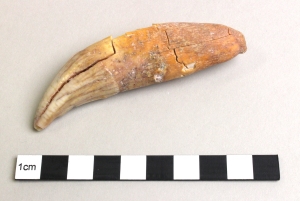

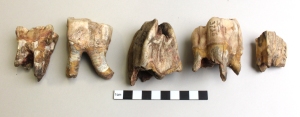
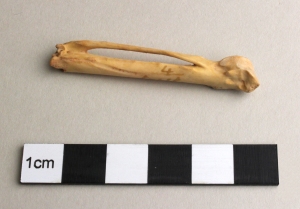
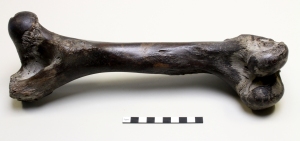
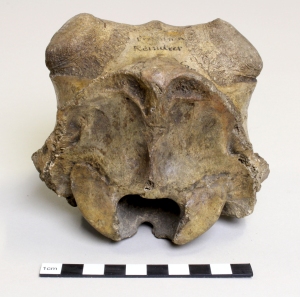

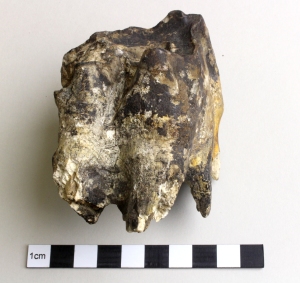
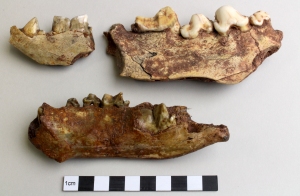
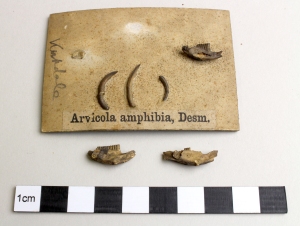
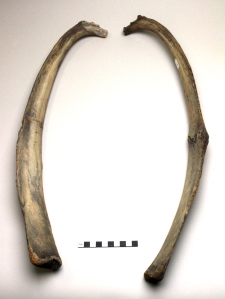

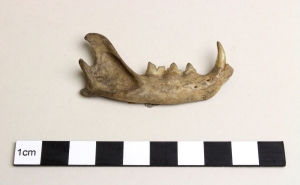
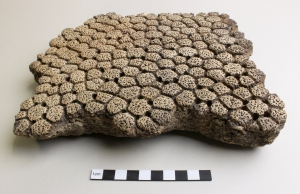
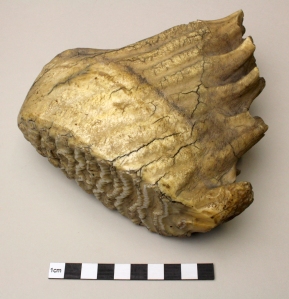
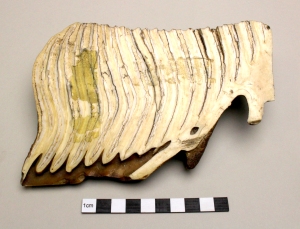

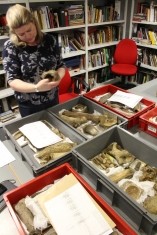
You must be logged in to post a comment.